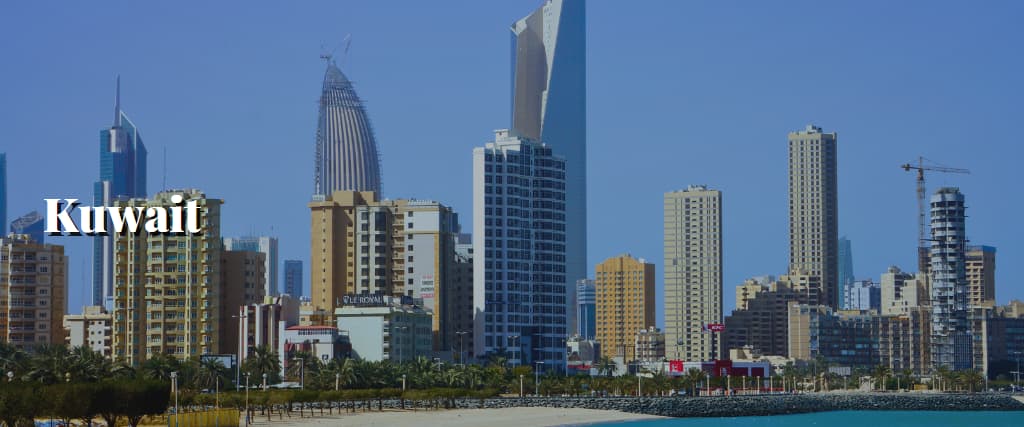A shared outrage over skyrocketing rents, housing costs, and the cost of living can bring otherwise disparate people together.
Where once a week’s rent would have allowed you to have reasonably social relationships but still afford that vacation periodically, it now appears that we are doomed to spend all of our days working just so that we may have a safe and secure place to go to bed and perhaps even afford a leisurely get-together for lunch maybe once every month.
Sadly, today’s dollar isn’t worth what it once was.
Also, you may think we are the only ones dealing with the astronomical price tags on products and services here in Australia. In reality, there are many countries and regions where living expenses are even higher.
Here’s some good news: Numbeo has just released their updated annual evaluation of the world’s most expensive countries—as well as the cheapest, which should help with the decision to move to give your saving accounts a break.
The data evaluates a variety of living expenses, including clothing, transportation, internet, accommodation, groceries, utility, and dining out.
New York City, widely recognised as among the most costly places to live, is a reference point for the index with a score of 100. Therefore, countries with an index score lower than 100 are cheaper and vice versa.
The report ranks Bermuda as the most expensive country to live in. Switzerland comes second, but new entrants like Barbados, the Bahamas, and the Cayman Islands exist.
Australia, thankfully, did not even crack the top ten most expensive countries to live in, coming in at number 13 with a 75.3 index. The index of rental costs in our country was only 30.0, compared to 96.3 in Bermuda.
If you’re considering packing up and moving this year, check out the list to know how much money you’ll need to save. These 50 countries have the world’s highest average cost of living in 2023.

1. Bermuda
Rent Index: 96.3
Living Cost Index: 141.8
Bermuda, an island nation in the North Atlantic Ocean, has the highest cost of living in the world. The primary cause is that Bermuda ships most of its essential goods from the United States due to its geographical isolation.
You might be shocked to learn that a month’s stay in Bermuda can cost as much as $2,000, not counting rent.
2. Switzerland
Local purchasing power: 118.44
Living Cost Index: 123.35
If you polled people about the top five countries they want to visit, Switzerland would undoubtedly be one of them. Switzerland is one of the world’s most expensive countries due to its well-deserved reputation as a paradise on Earth. Accommodations, meals, and miscellaneous costs are higher than in any comparable location.
Due to higher wages, the cost of services is also relatively high. While you may find the cost of living in Switzerland high in other areas (such as real estate, education, medical expenses, tourism, and transportation), you may find that electronics purchased in Switzerland are less expensive than in its neighbours. However, Switzerland deserves all praise due to its stunning natural beauty.
3. Norway
Local purchasing power: 83.11
Living Cost Index: 100.9
Norway is stunning, with its lush vegetation, towering mountains, and ethereal waterfalls. And by now, you’ve figured out that this statement also means it costs a pretty penny. Indeed, the expansive welfare states, taxation rates, and high wages contribute to the high cost of living.
Housing and utility prices are relatively low compared to the high cost of transportation and dining out. Norway is more costly than others due to its high tax rates and democratic socialism.

4. Iceland
Local purchasing power: 77.06
Living Cost Index: 94.86
The natural scenery in Iceland is simply breathtaking. It is a sight to behold with its soaring waterfalls and jagged lava landscapes. Because of their heavy reliance on imports, Icelanders enjoy significantly higher wages.
Consumer prices in Iceland can be up to 66% higher than in Europe. In addition, visiting Iceland as a tourist can be expensive, so careful budgeting is essential.
5. Barbados
Rent Index: 21.2
Living Cost Index: 88.8
Barbados is among the most expensive Caribbean islands because it ships many necessities from the United States and the United Kingdom. Due to infrequent public transportation and high taxes, the cost of living is exceptionally high.
Barbados has a high Human Development Index (HDI) thanks to its strong performance in several key areas, including foreign direct investment and tourism. Tourists can expect to pay more than they would in the United Kingdom for food, lodging, transportation, and entertainment.
6. Jersey
Rent Index: 53.9
Living Cost Index: 80.0
Jersey has been called one of the most beautiful places on Earth due to its unique blend of English and French culture. The beaches are beautiful, the culture is fascinating, and the food is out of this world. It’s one of the best places to live globally, but rising housing costs make it prohibitive for many.
Real estate and other necessities like healthcare, transportation, food, and education are expensive. Living expenses in Jersey are 14.56 per cent higher than in the United States. Jersey is included in the list because it is one of the countries that export the most products.
7. Israel
Local purchasing power: 75.58
Living Cost Index: 88.05
Israel is one of the most photographed countries in the world, with its stunning scenery and historical sites such as Jerusalem’s ancient streets and the Negev Desert. This city has a high cost of living, which is to be expected.
Israel is not exactly a budget destination, with its overpriced taxis and eateries and sky-high hotel rates. According to the “Worldwide Cost of Living” survey of 2021, Tel Aviv is the most expensive city in the world.

8. Denmark
Rent Index: 30.4
Living Cost Index: 78.6
Denmark is one of the most expensive countries because of its reputation as the happiest place on Earth and because it is a beautiful tourist destination with peaceful lakes and rolling hills—the general efficiency of the country’s infrastructure results in a high cost of living.
Consistently high wages and a steep income tax system make business challenging and financially burdensome. Denmark is home to some of the most expensive cities in the world, including Aarhus and Copenhagen, but there are also some relatively inexpensive options. Denmark has free education and healthcare, but workers still lose half their income to taxes.
9. Bahamas
Rent Index: 39.6
Living Cost Index: 90.9
The Bahamas, with its gorgeous beaches and pleasant climate, is widely regarded as one of the world’s top travel destinations. Since most goods are imported and subject to tax in the Bahamas, the living expenses and tourism are also exceptionally high. Most things are imported because the country is small and isolated, so it cannot produce them domestically.
Although the exchange rate with the US dollar is 1:1, consumer prices in this country are significantly higher. The Bahamas is a fantastic destination for a relaxing getaway, but any trip there should be carefully planned to avoid breaking the bank.
10. Singapore
Local purchasing power: 91.34
Living Cost Index: 83.98
Singapore’s astounding cultural diversity and flourishing flora and fauna sites make it one of the most popular tourist destinations in the world. According to several rankings, it is the most picturesque city in Asia and the eleventh most beautiful in the world.
Living costs in Singapore are exceptionally high due to the country’s limited land supply, shortage of natural resources, and expensive housing market.
Unbelievable, right? The costs may catch you off guard, but in all honesty, they’re well worth it. Which country tops your list of dream vacation destinations?
11. Ireland
Local purchasing power: 82.27
Living Cost Index: 76.05
Ireland is one of the most expensive countries in the world, which may surprise you. Though groceries are about 8% cheaper than in the United States, the local currency is worth nearly 23 per cent less.

12. Lebanon
Local purchasing power: 35.12
Living Cost Index: 69.62
Although the cost of living in Lebanon is slightly lower than in the United States, the local currency only provides access to about 70% of the dollar’s buying power. However, at only $566.60, monthly rent is significantly less than the average in many other nations included in the list.
If you have the means, dining out at Lebanon’s five-star establishments and enjoying the country’s exquisite cuisine can be pretty pricey. On the other hand, there is plenty of chain restaurants, many of which provide excellent value for the money. Remember that the going rate for a drink in a bar or nightclub is usually between $5 and $6.
13. Canada
Local purchasing power: 87.98
Living Cost Index: 70.22
Canada, our neighbour to the north, has a standard of living on par with that of the United States. However, purchasing power in Canada is substantially lower than in the United States, by around 18%. However, rent is about 43% cheaper in Canada, and healthcare costs are even more affordable.
Quebec is the cheapest Canadian province overall and home to the country’s most reasonably priced city. The housing market and rental rates in many of Canada’s most affordable cities are among the country’s best.
14. Qatar
Local purchasing power: 93.67
Living Cost Index: 62.81
On average, living expenses in Qatar are 19.9 per cent less than in the United States. The average monthly rent in Qatar is 4% higher than in the US.
It’s common knowledge that living expenses are high in Qatar. Furthermore, monthly rent averages $1,441.02. The plus side is that grocery prices are roughly 15% cheaper than in the US.
To enjoy a similar standard of living in Dubai as you would in Doha, you would need approximately 1045 QR more. We used the Cost of Living Plus the Rent Index to conclude.
15. Netherlands
Local purchasing power: 87.99
Living Cost Index: 75.66
Although the cost of living in the Netherlands is only about 5% higher than in the United States, this does not indicate the actual cost. Furthermore, individual income tax rates can reach 49.5%, making it a very unfriendly tax environment.
The cost of living is high regardless of how much money you make. In the beginning, it is vital that you carefully manage your expenses, especially those associated with food, healthcare, and the use of modern communication technologies. Driving is also quite expensive.

16. Australia
Local purchasing power: 104.63
Living Cost Index: 77.75
Australia ranks among the world’s most costly nations. It’s also expensive for visitors and locals to live and work in this country. Living expenses in Australia are among the highest in the world.
Australia is home to stunning landscapes like rugged mountains and pristine beaches, but the country’s culture could be better. High taxes, for example, harm the average Australian’s standard of living. To show how much they value you, the Australian government will take a chunk of your earnings every year, regardless of how much you bring in.
17. New Zealand
Local purchasing power: 83.63
Living Cost Index: 74.52
New Zealand has the highest average cost of living compared to other countries. The value of its currency is one of the many factors contributing to this. Since 1985, the value of one New Zealand dollar has been equal to one US dollar, so if you want to shop in New Zealand, you’ll have to fork over more than $1 in exchange for one NZ dollar.
Because of its relative isolation, New Zealand has a higher cost of living than many other tourist hotspots. Prices are much higher because of the high cost of importing electronics, food, and clothing.
18. Cyprus
Local purchasing power: 57.31
Living Cost Index: 59.03
Without housing, a single person can expect monthly expenses of 829.5 USD (777.4 EUR). On average, the Cypriot cost of living is 22.0% less than that of the United States.
The cost of living in Cyprus is high, but it’s still lower than the national average in the United States. Food is almost 20% cheaper than in the United States, with monthly rent at an average of $674.82.
Without rent, a person’s monthly expenses are estimated to be close to €730. Approximately €2,566 per month is the estimated cost of maintaining a four-person household.

19. United Arab Emirates
Local purchasing power: 92.17
Living Cost Index: 58.33
Without housing costs, a family of four can expect to spend $3,145.6 (11,552.8 AED) monthly. Without housing costs, a single person can expect to pay 913.8 USD per month (3,356.3 AED). U.A.E. residents enjoy an average 18.7 per cent lower cost of living than their American counterparts.
Although it ranks among the world’s most expensive countries, living expenses in the United Arab Emirates are nearly 12% lower than in the United States. Additionally, there is no personal income tax, and groceries cost around 22% less than in the United States.
20. Denmark
Local purchasing power: 99.45
Living Cost Index: 84.12
Compared to the United Arab Emirates, where the average cost of living is $1498, the cost of living in Denmark is $1809 per year, or 21% higher. To compare, the United Arab Emirates came in at 28 on the list of most expensive countries in the world, while Denmark came in at 17.
Although the cost of living is lower here, it is still significantly higher than in the United States by about 14%. The purchasing power of locals here is higher than in many other countries, but it’s still not on par with the United States.
21. Nigeria
Local purchasing power: 9.34
Living Cost Index: 30.49
Even though it ranks among the world’s most expensive nations, Nigeria is much cheaper than the United States. Compared to the United States, its cost of living is nearly 40% lower, but the purchasing power is low. The monthly rent for a Nigerian here is about $713.99, and healthcare is about 20% cheaper than in the United States.
Workers in Nigeria can expect to earn anywhere from a minimum of 86,124 NGN (actual wages could be substantially lower) and a maximum of 351,710 NGN per year. These figures include the bonuses.
The minimum monthly budget required to maintain a comfortable standard of living in Nigeria is N200,000. You can pay your rent, buy groceries, and take public transportation with this amount.

22. Italy
Local purchasing power: 61.74
Living Cost Index: 66.47
Without rent, a monthly budget for a family of four is estimated to be $2929.5 (2757.8 €). The average monthly budget for a single person is estimated at 834.2 USD (785.3 EUR) without rent. Living in Italy is 16.3 per cent cheaper than living in the United States. The average Italian rent is 56.7 per cent less than the average American.
Rents in small towns typically start at $300 per month. To a large extent, the cost of living in Italy is the same everywhere, apart from housing.
With a high cost of living that is only 2% cheaper than the United States, Italy is among the 20 most expensive countries in the world. Even so, healthcare and food are more affordable than in the United States.
23. Trinidad and Tobago
Local purchasing power: 38.47
Living Cost Index: 54.88
Trinidad and Tobago has an average cost of living of 26.1 per cent lower than that of the United States. The average monthly rent in Trinidad and Tobago is 70 per cent cheaper than in the United States.
Living expenses in Trinidad and Tobago are low compared to other developed countries, with rent being among the cheapest and food is about 16 per cent cheaper.
There is a marked decrease in the cost of groceries compared to the United States.
24. Panama
Local purchasing power: 33.09
Living Cost Index: 51.43
A middle-class lifestyle costs anywhere from $1,000 to $3,667 monthly, depending on the city, unless you choose to reside in the local towns, where predominantly only Panamanians live. These projections are based on the assumption that solos, families, or couples would like to keep some semblance of their current standard of living.
The average cost of living in Panama is 20 per cent lower than in the United States but still among the top 20 globally. However, healthcare and food are still less expensive here than in the United States.
25. United Kingdom
Local purchasing power: 88.78
Living Cost Index: 69.65
According to the Mercer Cost of Living Survey, London, United Kingdom, came in at number fifteen on the list of the 227 most expensive places to visit in 2022. Edinburgh at 66th, Glasgow at 86th, and Aberdeen at 93rd are some other UK cities that appear on the list but are much further down.
While the UK’s cost of living is slightly lower than that of the US, British citizens save around 13% on groceries compared to Americans. Taxes are higher in Britain, with the top rate of personal income tax reaching 45%.
26. Venezuela
Local purchasing power: 15.41
Living Cost Index: 43.2
The average monthly wage in Venezuela is around $175, which may seem low to us but is, unfortunately, the norm there. Renting can make it tough to cover basic living expenses like food and utilities. In Venezuela, the minimum wage is roughly $6 per month.
Venezuela has a much lower cost of living than the United States but a low purchasing power. Prices for food, housing, and medical care are much lower than in the United States, though the country is still considered pricy.

27. Belgium
Local purchasing power: 79.72
Living Cost Index: 72.61
Belgium has a high cost of living, but its residents also enjoy high wages and a comfortable standard of living.
Belgian living costs are slightly higher than American ones; perhaps due to the country’s penchant for chocolate. However, healthcare is about 5% more expensive for Belgians.
Living in Belgium will cost you between €950 and €1,350 monthly. Budgeted costs include food, housing, study materials, clothing, laundry, health care, insurance, and miscellaneous items like entertainment, groceries, transportation, and so on.
28. Sweden
Local purchasing power: 98.14
Living Cost Index: 71.74
Despite the country’s high cost of living, the Swedish krona remains relatively strong. On the other hand, this country’s income tax rate is quite high, at around 32 per cent.
Sweden has a 1.95 per cent higher cost of living than the UK, so it would be wise to put some money aside before moving.
The cost of living varies significantly from region to region within Sweden, but everywhere you look, you’ll find that things are pretty pricey. Most of these astronomical costs can be traced back to rent, which increases by about 1% annually.
29. Finland
Local purchasing power: 91.02
Living Cost Index: 73.2
Averaged over a year, the cost of living in Finland is 6.2 per cent lower than in the United States. On average, Finnish rent is 51.2% cheaper than in the US.
Finland is among the world’s most expensive places to live, but the average monthly rent is only $786.16. Healthcare is 7% more expensive, while groceries are about 5% cheaper.
Finland has higher-than-average taxes, wages, and living costs than the rest of the European Union. Many public services, however, are subsidised by tax dollars, making them more affordable for citizens than in most other countries.
30. France
Local purchasing power: 85.41
Living Cost Index: 74.13
France has a higher standard of living than most Western European neighbours, but its average cost is also higher. Paris is the most expensive city.
The cost of living in France is higher than in the United States by about 3%. Rent is cheaper, so you save money there, but food and medical care are more expensive.
To live comfortably in France, a single person must earn about €3,200, while a family of three needs someone to earn about €5,600. Living expenses in Nice, Lyon, and Pari are significantly higher than in other French cities.

31. Austria
Local purchasing power: 77.25
Living Cost Index: 71.04
Prices in Austria, especially in major urban centres like Vienna, can be high. According to a 2020 study, Vienna, the capital of Austria, ranked 21st on the list of the most expensive cities in the world.
One factor contributing to Austria’s high cost of living is its income tax, which currently stands at 55 per cent. The local purchasing power is only 1% higher than the U.S. average, and rent is relatively cheap, so these factors help to mitigate the problem.
32. Japan
Local purchasing power: 87.11
Living Cost Index: 77.03
It costs roughly three times as much per month to maintain a similar standard of living in Japan as in the United States. The cost of living in the major cities is considerably higher than in rural areas. The cost of living in Japan is among the highest in the world, as it ranks as the tenth most expensive country.
Japan is also the most expensive for expatriates, with their cost of living exceeding $40,000 annually. It has one of the world’s largest economies, second just behind the United States. The cost of living in Tokyo is higher than in other major cities like Paris (which is at 100) and thus ranks as one of the most expensive in the world.
33. Greece
Local purchasing power: 39.73
Living Cost Index: 56.22
If you’re considering becoming an ex-pat, Greece is the ideal destination. Compared to the rest of Europe and the United States, the cost of living in Greece is 30% cheaper.
Costs vary significantly from one region to another. For instance, the islands’ rent, gas, and groceries are more expensive.
Living costs in Greece are roughly 53% lower than in the United States. The average monthly rent in Greece is only $376.38, a relief for families whose income will be severely reduced by the country’s high individual tax rate of 44%.
35. South Korea
Local purchasing power: 76.85
Living Cost Index: 73.22
Living costs in South Korea are about what one would expect from a developed country. Compared to places like Laos and China, it’s on the pricier end of the spectrum but still cheaper than places like Japan and Singapore. Living expenses in Seoul, the nation’s capital, are typically higher than in other parts of South Korea.
While living costs in South Korea are higher than in the United States, they are 17% lower than in New York City. Average monthly rental prices in South Korea are only $412.09, which is significantly lower than average.
35. Iran
Local purchasing power: 17.98
Living Cost Index: 37.39
On average, living expenses in Iran are 52.6% cheaper than in the United States. Iran’s average monthly rent is 70 per cent less than that of the United States.
Iran has a much lower cost of living than the United States does across the board, but the country’s purchasing power is low.
Costs associated with living here are manageable, at least not when compared to other countries. For a standard apartment of around 85 square meters, a monthly fee of USD 30 covers the basics like water, electricity, heating, and cooling.
36. Uruguay
Local purchasing power: 30.07
Living Cost Index: 52.07
Although living costs in Uruguay aren’t the lowest in South America, they are still significantly lower than they would be in the United States. Living expenses in Uruguay are 20.39 per cent lower than in the United States, according to data published in August 2022 on the website Numbeo.com, which compiles price information from consumers worldwide.
Even though Uruguay is included among the world’s most expensive places to live, the average person can expect to spend 17% less monthly there than they would in the United States. Despite the currency’s lower purchasing power, healthcare, groceries, and rent are all cheaper here.
37. Dominican Republic
Local purchasing power: 21.07
Living Cost Index: 41.77
Although the Dominican Republic is generally considered expensive, costs here are significantly less than in the United States.
Workers in the Dominican Republic can expect to earn anywhere from the minimum wage of 9,592 DOP to the maximum average of 34,940 DOP per year, all of which is gross income. These figures include bonuses. The range of salaries for various occupations is broad.
So, how much would you need for a comfortable life in the Dominican Republic? We estimate that a monthly income of at least US$1,000 is necessary to enjoy a comfortable lifestyle in the Dominican Republic.

38. Kuwait
Local purchasing power: 78.57
Living Cost Index: 48.68
Without housing costs, a family of four can expect to spend 2,713.6 dollars per month (832.1KWD). Without housing costs, a single person can expect monthly expenditures of 733.7 USD (225.0KWD). The cost of living in Kuwait (without rent) is 53 per cent lower than that in New York.
About two-thirds of Kuwait’s population comprises ex-pats, making it a popular destination despite its small size. Its thriving oil and banking industries make it an attractive location for business and employment. As foreign property ownership is restricted, renting is the most viable option.
Living expenses in Kuwait are more than 20% less than in the United States, yet locals’ purchasing power is higher. However, there is no tax on individual earnings.
39. Germany
Local purchasing power: 103.08
Living Cost Index: 65.58
Destatis reports that the average monthly expenditure is €2,507. 37% goes toward energy and housing costs, while 15% goes toward alcohol, tobacco, and food. In Germany, the annual cost of living is estimated at €30,084.
Generally, living expenses in Germany are about 5% lower than in the United States. Also, German has a 3 per cent stronger purchasing power. Unfortunately, Germany is one of the world’s most taxed nations, with an average personal tax rate of 37.7 per cent.
40. Costa Rica
Local purchasing power: 39.88
Living Cost Index: 47.01
Costa Rica’s overall cost of living is 37 per cent lower than the US average. Housing costs are where you’ll notice the most significant price difference. Rental costs in Costa Rica are roughly 71% lower than in the United States.
When weighed against its low purchasing power, the cost of living in Costa Rica is high. Nonetheless, the cost of groceries, medical care, and housing are all lower than in the United States.
On average, ex-pats can get by on $1,100 per month, but even frugal digital nomads and retirees should set aside a budget of $2,000 or more per month for couples.
41. Guatemala
Local purchasing power: 39.88
Living Cost Index: 47.01
Although the cost of living in Guatemala is roughly 23 per cent lower than in the United States, the purchasing power of the local currency is over 66% lower. In contrast to the United States, however, basic living expenses such as groceries and housing are all more affordable. Rents and groceries are cheap, but healthcare is nearly as expensive as in the United States.
The estimated monthly budget for a family of four is $2,215.9 (or 17,252.2Q) if housing costs are excluded. Without housing, a single individual can expect monthly expenses of $629.99 (4904.3Q). Living costs in Guatemala are 56.5% lower than those in New York (excluding rent).
42. Slovenia
Local purchasing power: 59.48
Living Cost Index: 53.88
The cost of living in Slovenia is typically lower than in the United States. Consumer prices in the United States are around 45 per cent higher than in Slovenia. Rent in the United States is, on average, 190 per cent higher, according to the cost of living database Numbeo.
At first glance, Slovenia’s 16% lower cost of living may make it seem like a desirable place to live. However, locals are subject to a hefty 50% income tax.

43. Portugal
Local purchasing power: 46.8
Living Cost Index: 47.94
Depending on where in Portugal you are located, you can expect to spend around €1,608 monthly on food, housing, transportation, etc. The living expenses in Portugal are roughly 50% lower than in the United States, making it one of the most affordable Western European countries.
Compared to the United States, Portugal offers a 22% lower cost of living, which could make moving there seem like an excellent financial move. At first glance, Portugal may not be as expensive as some other European nations, but its top marginal income tax rate of 48% makes it one of the most expensive places to live.
44. Russia
Local purchasing power: 37.41
Living Cost Index: 35.26
While the living expenses in Russia are relatively low compared to the United States, the average citizen’s purchasing power is much lower. Although rent is reasonable and groceries are less expensive than in the United States, healthcare costs are rapidly approaching U.S. levels.
The cost of living in Russia is manageable for ex-pats. Overall, living in Russia is less expensive than in many Western countries, but Russia cannot be considered cheap. Living expenses for an ex-pat in Russia will vary widely according to individual preferences.
45. Taiwan
Local purchasing power: 58.35
Living Cost Index: 62.35
Living costs in Taiwan are surprisingly low, especially compared to other Asian countries like Hong Kong and Singapore. Overall, expenses like rent, labour, and utilities are much lower.
Despite Taiwan’s reputation as one of the world’s most expensive places, the average monthly rent here is surprisingly low. However, this is offset by a 17% increase in the cost of healthcare and a 6% increase in groceries expenses compared to the United States.
46. Slovakia
Local purchasing power: 54.7
Living Cost Index: 44.68
A one-bedroom apartment in Slovakia will cost you around $400 monthly to rent, and the average monthly salary in the country is around $950.
The average Slovak person can expect to spend 38.1% less monthly than an American. The average monthly Slovakian rent is 67% cheaper than in the USA.
The Slovak Republic has a lower cost of living than the United States and a lower purchasing power. On the other hand, the cost of necessities like food, housing, and medical care remains lower than in the United States.
47. Croatia
Local purchasing power: 47.55
Living Cost Index: 48.94
Croatia has the fourth highest cost of living in all of Eastern Europe. However, relative to other countries, the cost of living here is lower than in 51% of the world. Croatia is still a relatively inexpensive place to live compared to other Western European countries, the United States, Australia, and Canada.
In general, the living expenses in Croatia are 35.0 per cent less than that in the United States. The average Croatian rent is 72.9% less than the average U.S. rent.
The low purchasing power of the average Croat means that the country has a high cost of living. Food and housing prices are lower than in the United States, which will impress many Americans. However, healthcare in the country is relatively expensive.
48. Chile
Local purchasing power: 33.27
Living Cost Index: 43.9
Although ex-pats generally find living costs in Chile reasonable, the country is still among the more costly destinations in South America due to its relatively secure economic and political climate.
Living expenses in Chile are much lower than in the United States, so the country has a lower cost of living. However, you can expect to earn low wages and have little purchasing power.
49. Iraq
Local purchasing power: 40.92
Living Cost Index: 34.47
In addition to absurdly low rent, grocery and medical costs in Iraq are much lower than in the United States. However, its purchasing power is low compared to the United States.
Without housing, a single person can expect to spend an average of $470. Iraq’s average cost of living is 57.2 per cent lower than the United States. Generally, renting in Iraq is 80% cheaper than in the U.S.
50. Spain
Local purchasing power: 70.04
Living Cost Index: 53.88
There are several variables to consider when creating a final budget. From what we’ve seen, however, it seems that monthly expenditure in Spain will set you back between €820 and €1,100 for a single person.
Living in Spain is generally more affordable than in the United States, and the Spanish currency has decent buying power. Taxes on individual income in Spain currently sit at a lofty 45 per cent.
51. Jordan
Local purchasing power: 31.34
Living Cost Index: 49.19
Without housing costs, a family of four can expect to spend $2,487.6 per month (1768.2 JOD). Without housing, a single person can expect to pay $701.6 (498.7 JOD) monthly.
The cost of living in Amman, Jordan, is 51.4 percent lower than that in New York City (without rent). The average monthly rent in Amman is 89 percent less than the monthly rent in New York.
Although the cost of living indicators like rent, healthcare, and groceries are generally lower in Jordan than in the United States, the country still ranks among the most expensive to live in due to the lower wages.
52. China
Local purchasing power: 59.99
Living Cost Index: 41.77
Without rent, a single person can expect to spend an average of $566.8 per month. On average, living expenses in China are 45.6% cheaper than in the United States. On average, Chinese rents are 61.3% more affordable than American ones.
Wages in China are lower than in the United States, but the cost of living there is lower overall, including the price of food, medical care, and housing.
53. Oman
Local purchasing power: 84.24
Living Cost Index: 49.42
Although Oman’s purchasing power is higher than other countries on the list, it has significantly lower prices than the United States on almost every product. It’s worth it just for the low rent prices.
A trip to Oman is expensive. Costly items include lodging and transportation/tours. In general, a night at a decent hotel will cost you anywhere from 12 to 15 OR (£20 to25 or USD30 to 40) at the low end, and at least double that (and sometimes more) (up to 75 OR [£120 or $200]) at the high end.
54. Albania
Local purchasing power: 30.19
Living Cost Index: 35.5
Living expenses in Albania are about the same as in other comparable countries. Due to the low cost of necessities like food, utilities, and pricing, an ex-pat would primarily need to budget for private medical care and international education. Tirana, the nation’s capital, ranks 162nd on Mercer’s Survey out of 227 cities.
In Albania, living expenses such as rent, food, and medical care are much more affordable than in the United States. The low purchasing power, however, mitigates some of these expenses.
Living comfortably in Albania on $600 per month is possible if you are accustomed to a more frugal way of life. Conversely, 700 USD monthly would not be sufficient for those seeking more comfort.
55. Vietnam
Local purchasing power: 29.38
Living Cost Index: 37.48
While still one of the world’s most expensive places to live, the cost of living in Vietnam is much lower than in the United States. This is true across the board, from housing to medical care to everyday necessities.
In their search for a new home, many would-be ex-pats have considered Vietnam because of its allure as a place to enjoy a high standard of living without breaking the bank.
The capital city, Hanoi, is Vietnam’s second most expensive city after Ho Chi Minh City. You can have middle-class comfort for two for around $1,300 per month.

56. Luxembourg
Rent Index: 48.3
Living Cost Index: 73.2
The tiny European country of Luxembourg sits between the larger countries of France and Germany. CNN has ranked it as the most expensive country in the world and the location of the European Union’s headquarters location. The cost of living is high, along with the general living standards, but apart from that; there is little that sets this place apart.
It has one of Europe’s most robust banking industries, and its central bank has the most gold compared to other institutions in the world (and isn’t afraid of using it). Direct flights on the national airline, which the Luxembourg government owns, connect the Luxembourg City Airport with New York City for about $350 per roundtrip.
57. Hong Kong
Rent Index: 66.3
Living Cost Index: 75.7
A comparison of the cost of living in the cities on the list reveals that Hong Kong, by far, has the highest overall. It’s clear from these numbers that Hong Kong has a prohibitive cost of living and is also a very challenging place to live.
In 2017, households spent about $3,856 monthly (roughly 13 million HKD). If you plan on making this location your permanent residence, you should budget at least $3,856 (or its equivalent in other currencies) per month to cover basic living expenses.
It’s hard to find places where you can realistically afford such exorbitant prices without other financial assets, like savings accounts, so if you earn below 40000 USD yearly, you won’t have the means to pay for rent unless you plan to live elsewhere.
Conclusion
These nations have the highest average costs of living. There aren’t many unexpected things to discover across the globe. The reason is that they provide us with numerous advantages, such as a high quality of life, a favourable climate, and abundant natural resources.
Additionally, some nations consistently rank among the world’s most expensive. The countries on this list may come as a surprise, but there isn’t a single one that doesn’t have at least some potential for financial success.
Frequently Asked Questions
Is Dubai expensive?
Whether or not you run up your credit card bill in Dubai depends on your spending habits, just as it does anywhere else. The flight and lodging will account for most of the budget, followed by food and miscellaneous incidentals. Food and transportation costs are about the same as in Western Europe.
Which country has the best quality of life?
#1. Sweden. Sweden comes out on top according to a ranking of countries’ quality of life in 2022. Health care, public schools that meet or exceed international standards, political stability, economic prosperity, and personal safety all place highly in this country’s rankings for quality of life.
Which countries have free education?
Nordic countries like Finland, Denmark, Norway, Sweden, and Iceland provide low- or no-cost educational options: University education in Norway is free for all students, irrespective of their nationality or level of education.
Does Dubai have taxes?
Dubai does not have a personal income tax for most of its residents. But if you run an oil company, you’ll have to pay a whopping 55% in taxes. Import duties and taxes on entertainment are in place.
